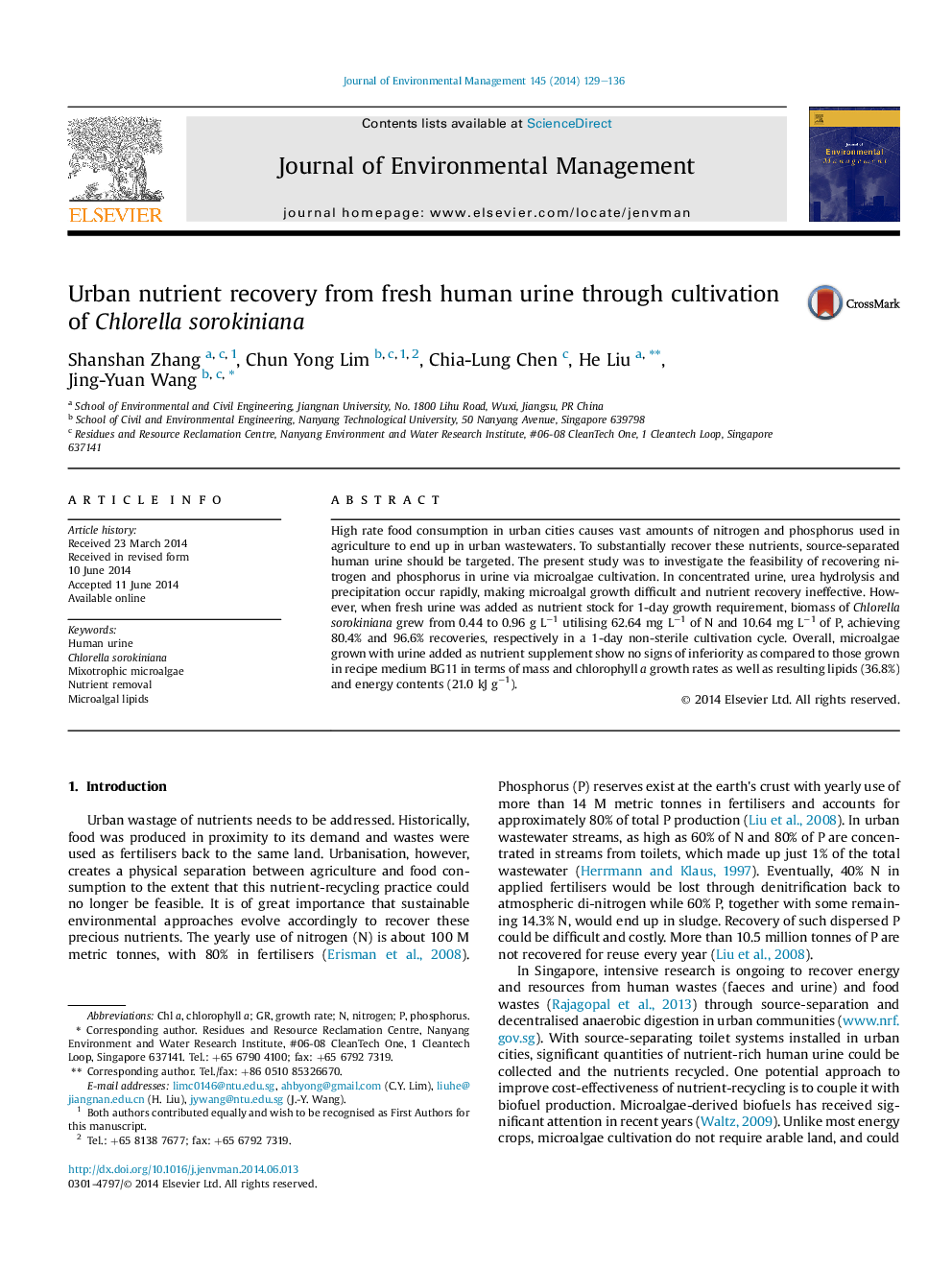| Article ID | Journal | Published Year | Pages | File Type |
|---|---|---|---|---|
| 7483465 | Journal of Environmental Management | 2014 | 8 Pages |
Abstract
High rate food consumption in urban cities causes vast amounts of nitrogen and phosphorus used in agriculture to end up in urban wastewaters. To substantially recover these nutrients, source-separated human urine should be targeted. The present study was to investigate the feasibility of recovering nitrogen and phosphorus in urine via microalgae cultivation. In concentrated urine, urea hydrolysis and precipitation occur rapidly, making microalgal growth difficult and nutrient recovery ineffective. However, when fresh urine was added as nutrient stock for 1-day growth requirement, biomass of Chlorella sorokiniana grew from 0.44 to 0.96 g Lâ1 utilising 62.64 mg Lâ1 of N and 10.64 mg Lâ1 of P, achieving 80.4% and 96.6% recoveries, respectively in a 1-day non-sterile cultivation cycle. Overall, microalgae grown with urine added as nutrient supplement show no signs of inferiority as compared to those grown in recipe medium BG11 in terms of mass and chlorophyll a growth rates as well as resulting lipids (36.8%) and energy contents (21.0 kJ gâ1).
Keywords
Related Topics
Physical Sciences and Engineering
Energy
Renewable Energy, Sustainability and the Environment
Authors
Shanshan Zhang, Chun Yong Lim, Chia-Lung Chen, He Liu, Jing-Yuan Wang,
